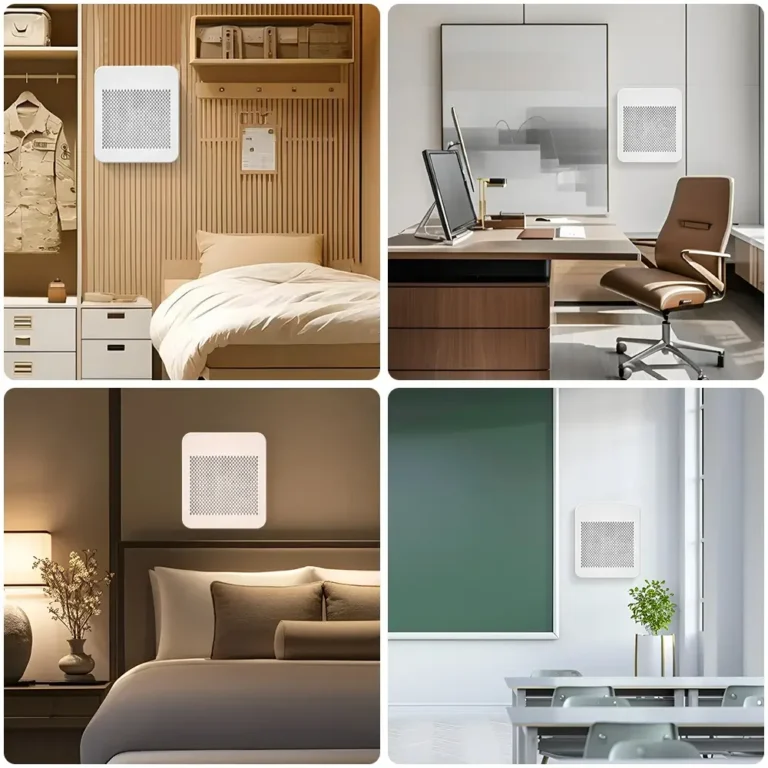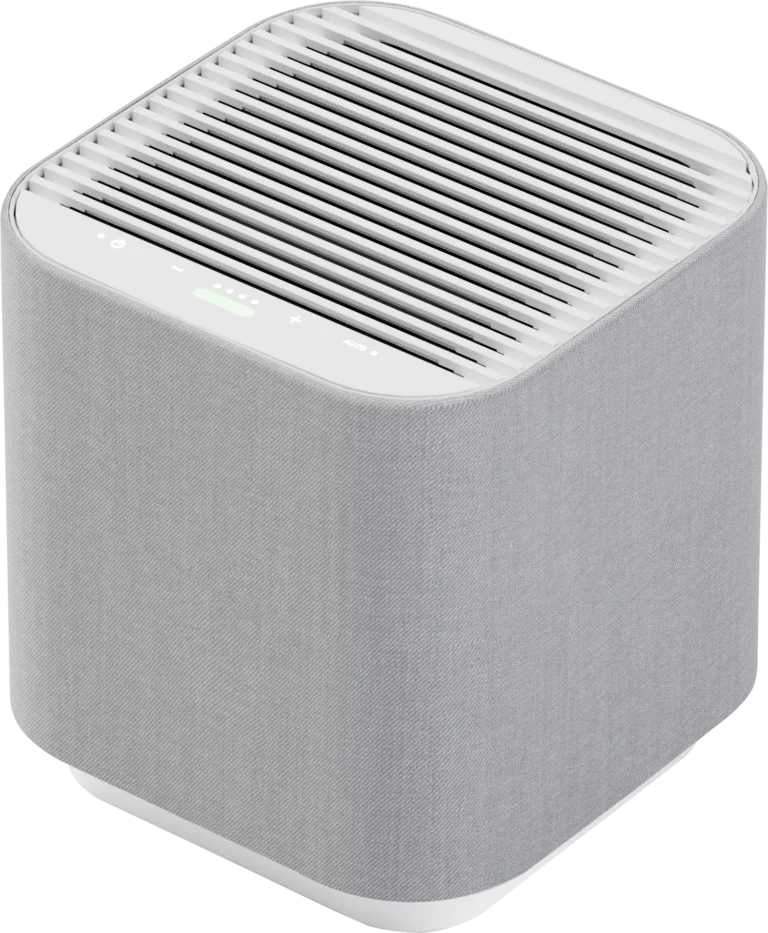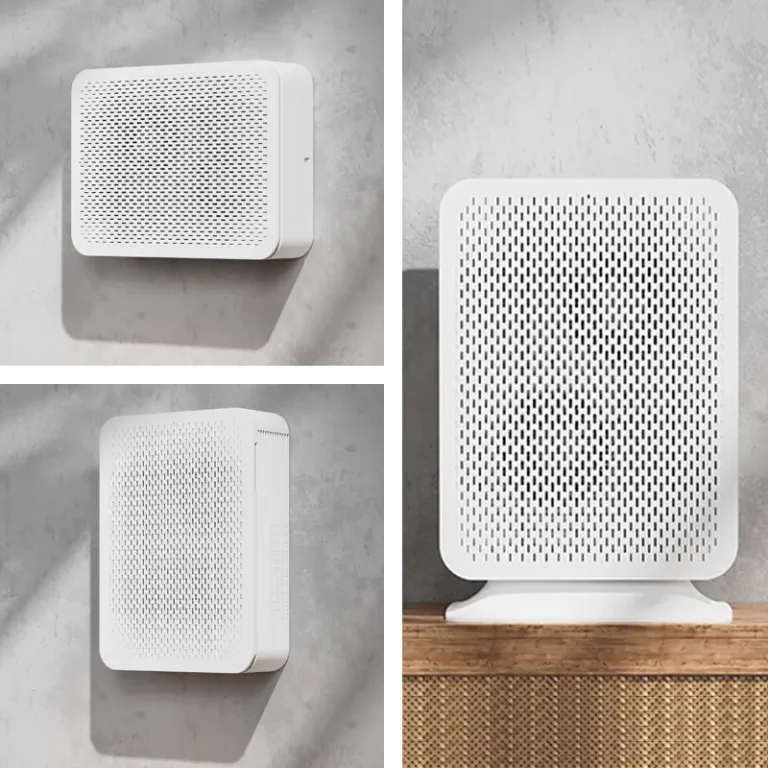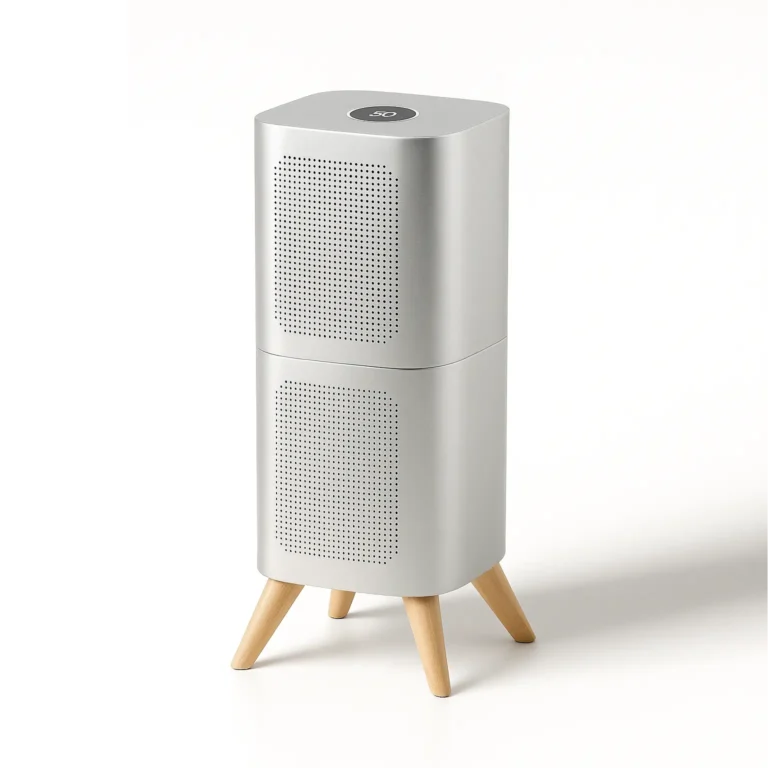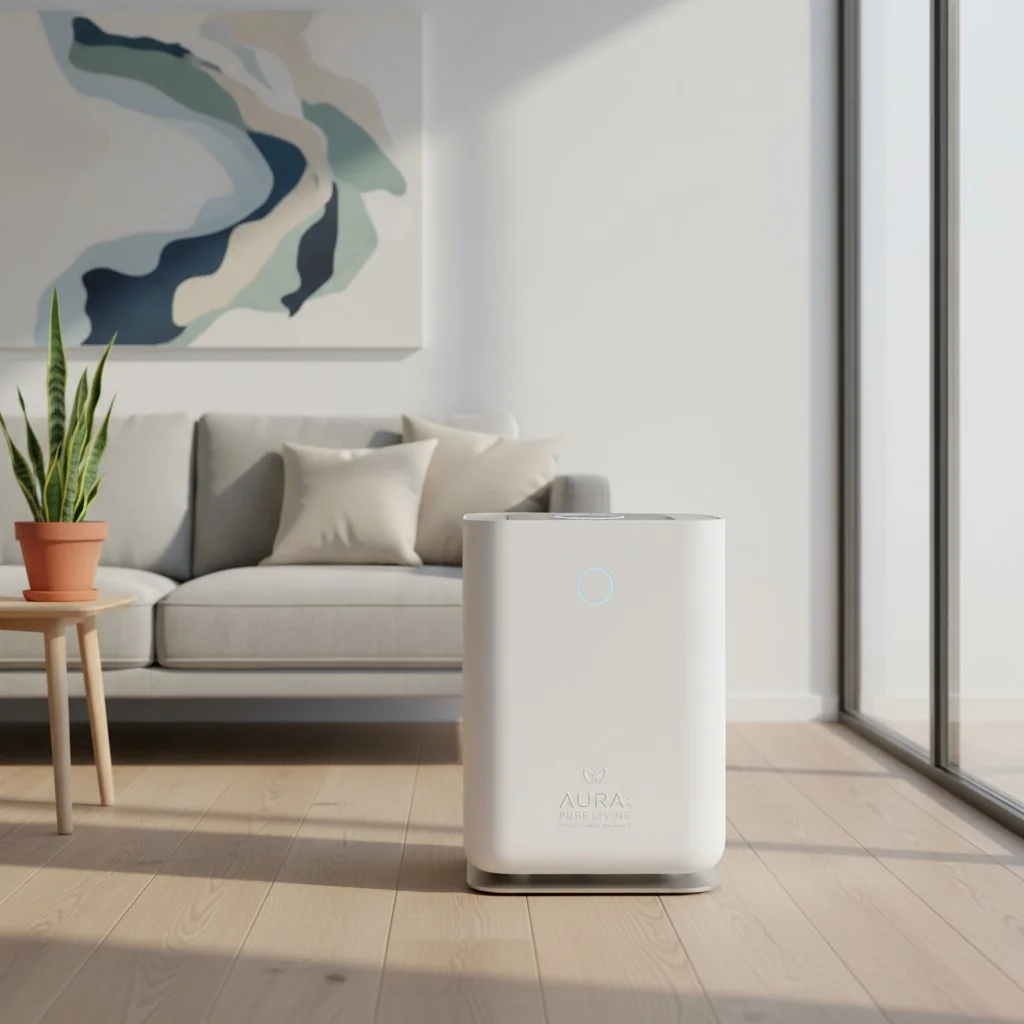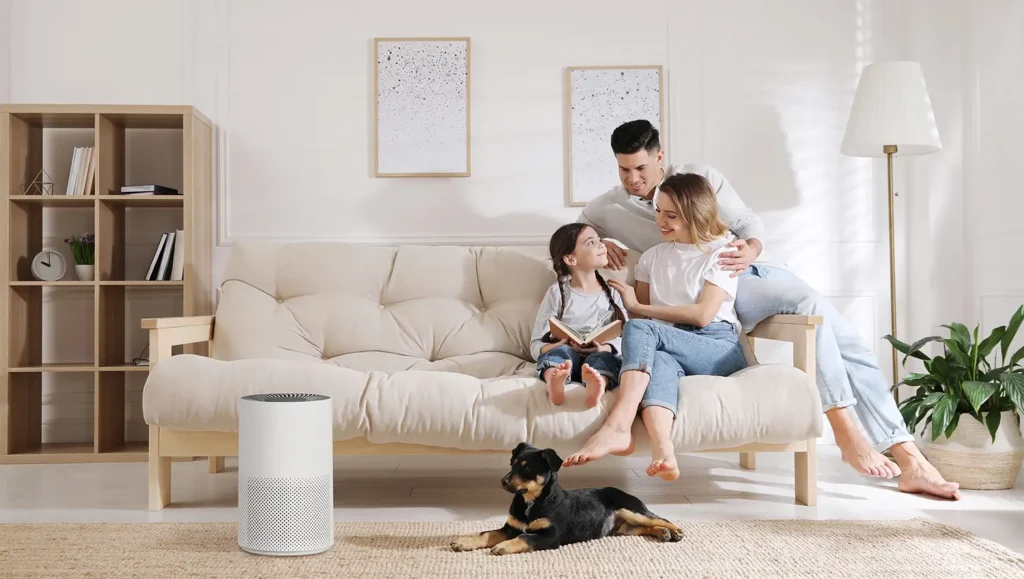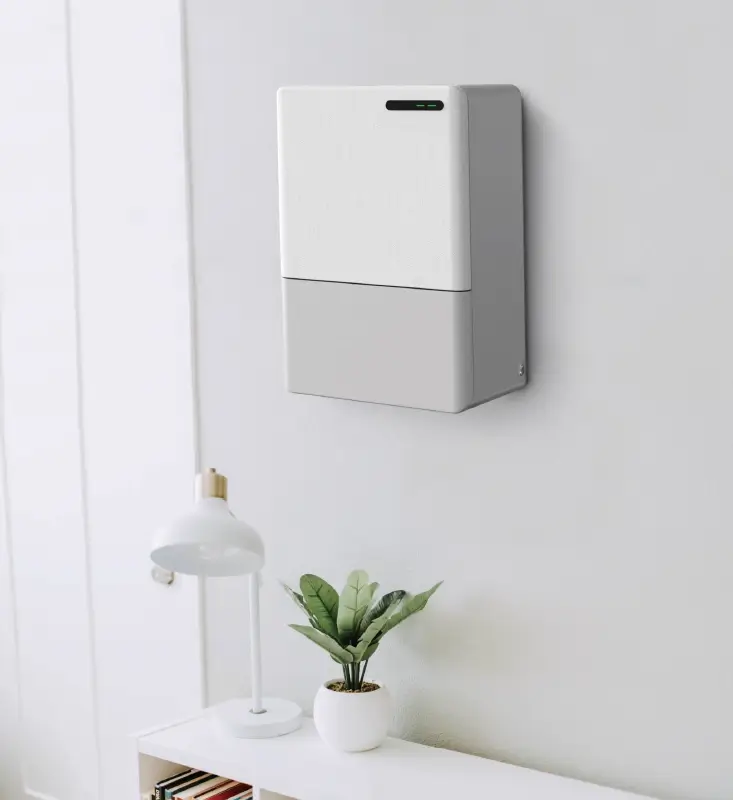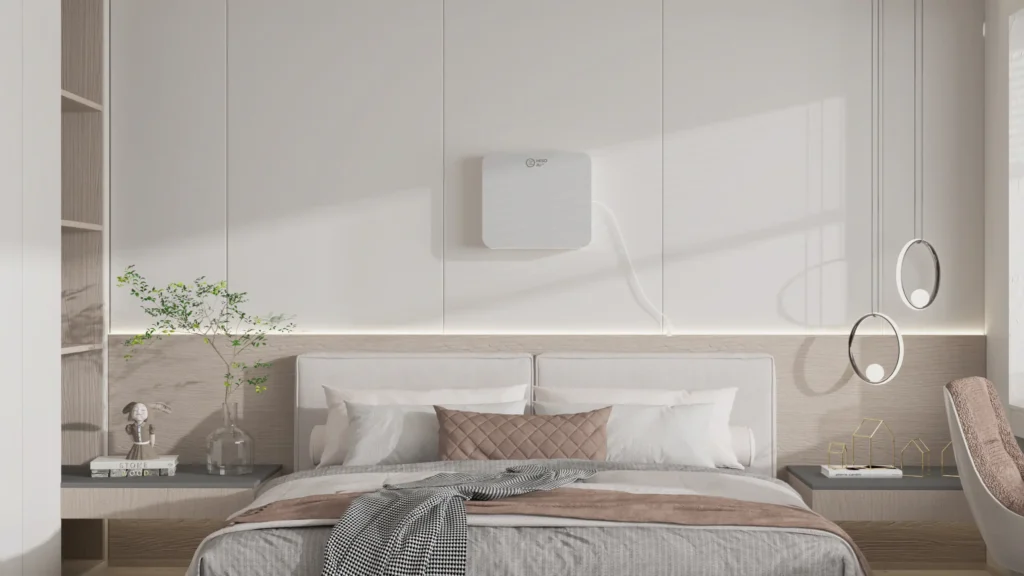Have you ever felt like your allergies are just too much to handle? With pollen swirling outside and dust settling indoors, I often find myself reaching for relief.
Air purifiers equipped with True HEPA filters can effectively remove dust, mold, and other allergens with an efficiency of 99.97%. They help alleviate allergy symptoms by capturing airborne particles as small as 0.3 microns, making them a worthwhile investment for improving indoor air quality.
But there's more to the story than just the effectiveness of HEPA filters. Understanding the different technologies and their applications can empower you to make the best choice for your home. Let’s dive deeper into how air purifiers work and what you should consider when buying one.
How Do HEPA Filters Work in Air Purifiers?
HEPA filters are renowned for their high efficiency in capturing airborne particles, but how exactly do they function within air purifiers?
HEPA filters work by forcing air through a fine mesh that traps harmful particles such as dust, pollen, mold, and bacteria. True HEPA filters capture particles as small as 0.3 microns with an efficiency of 99.97%, making them highly effective in improving air quality.
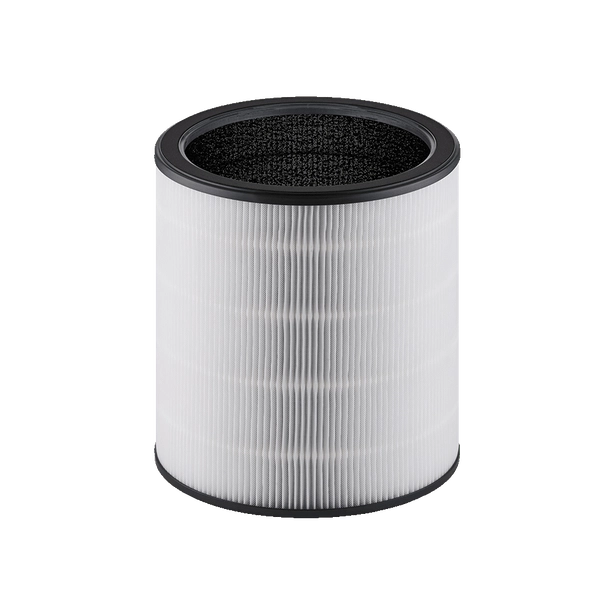
The Mechanics of HEPA Filters
HEPA, or High-Efficiency Particulate Air, filters operate by trapping contaminants in several ways: interception, impaction, and diffusion. As air passes through the filter:
- Interception occurs when particles follow the airstream and adhere to the fibers.
- Impaction happens when larger particles collide directly with fibers.
- Diffusion affects smaller particles, causing them to move erratically and eventually get trapped.
Why HEPA is Effective
The layered fibrous structure of HEPA filters makes them adept at capturing different particle sizes. This unique design allows them to remove dust, mold spores, pollen, and even some bacteria, which are common triggers for allergies.
For instance, while True HEPA filters1 are certified to capture 99.97% of particles that are 0.3 microns in diameter, not all HEPA-like filters meet this standard. Understanding this distinction is crucial when selecting an air purifier.
Considerations When Choosing HEPA Filters
When shopping for an air purifier with a HEPA filter, consider:
- Filter Replacement Costs: Regular replacement ensures optimal performance.
- Noise Levels: Some models may be louder at higher settings.
- Size and Coverage Area: Ensure the purifier matches your room size.
A comparison table can help illustrate these considerations:
| Feature | Importance |
|---|---|
| Filter Replacement | Essential for maintaining efficiency |
| Noise Levels | Consider if the unit will be used in a bedroom |
| Coverage Area | Must suit the room size for effective use |
By understanding these aspects, consumers can make informed decisions when purchasing an air purifier to address specific needs.
Are There Air Purifier Technologies That Aren't Effective for Mold?
Choosing the right air purifier involves understanding which technologies are truly effective against mold.
While HEPA filters excel at capturing mold spores, technologies like ozone generators and some UV lights are not effective for mold removal. These technologies may not address mold particles thoroughly and can sometimes pose health risks if not used correctly, making HEPA filters a more reliable choice for mold concerns.

Understanding Air Purifier Technologies
To effectively tackle mold, it's crucial to discern between various air purifier technologies and their capabilities. Let's explore the most common technologies and how they fare against mold.
-
HEPA Filters
High-Efficiency Particulate Air (HEPA) filters are renowned for their ability to trap microscopic particles, including mold spores, with an efficiency rate of up to 99.97%. They are particularly effective as they capture particles as small as 0.3 microns. This makes HEPA-equipped purifiers2 ideal for individuals looking to address mold and other allergens in their homes.
-
Ozone Generators
Ozone generators claim to neutralize odors and airborne contaminants. However, they are not recommended for mold because they primarily rely on chemical interactions that do not adequately remove mold spores. Moreover, ozone can cause respiratory irritation and exacerbate asthma symptoms.
-
Ultraviolet (UV) Light
Some air purifiers incorporate UV light technology, aiming to destroy microorganisms like bacteria and viruses. While effective under specific conditions, many UV lights in consumer-grade air purifiers are not potent enough to completely eliminate mold spores without extended exposure time, rendering them less effective compared to HEPA filters.
-
Activated Carbon Filters
Activated carbon is excellent at removing odors and VOCs (volatile organic compounds) but does not effectively capture mold spores. Combining activated carbon with HEPA filtration can enhance air quality but will not solely address mold issues.
-
Ionic Air Purifiers
These devices release charged ions that attach to airborne particles, causing them to settle on surfaces instead of being inhaled. While they might reduce airborne dust, they do little to eliminate mold spores directly and require regular cleaning to prevent resuspension of particles.
Making Informed Choices
When selecting an air purifier, prioritize those with True HEPA filters if your primary concern is mold removal. Additionally, consider models that combine HEPA with other technologies, such as activated carbon, for broader air quality improvements. Remember, the efficiency of an air purifier also depends on its proper maintenance and the size of the area it is intended to serve. Evaluating these factors will aid you in making the best choice3 for your needs.
What Features Should You Look for in an Air Purifier?
Choosing the right air purifier can significantly impact your indoor air quality, but what features should you prioritize?
When selecting an air purifier, prioritize features like True HEPA filters, CADR ratings, noise levels, and smart capabilities to ensure optimal performance and convenience.
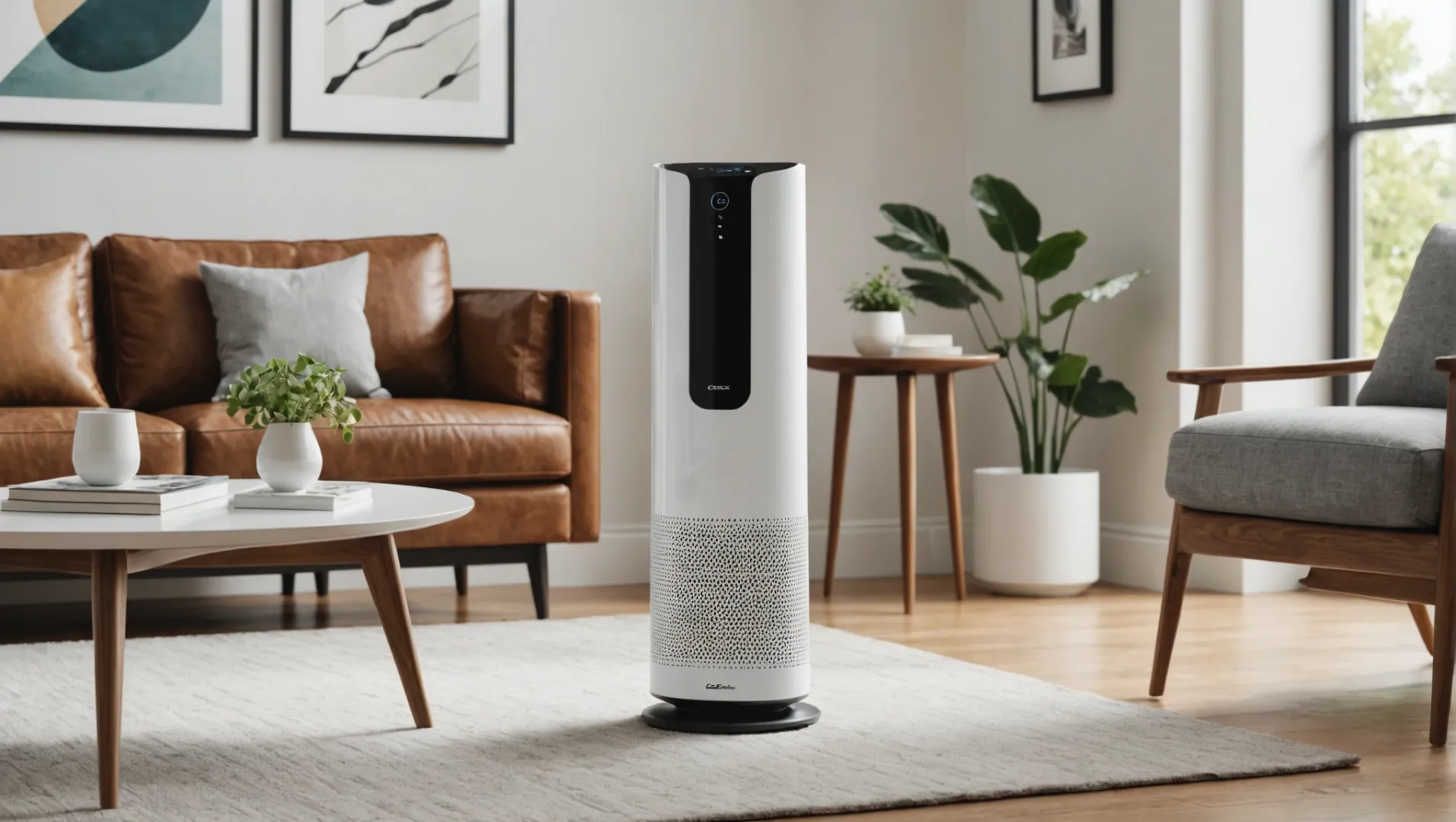
True HEPA Filters: The Gold Standard
True HEPA (High-Efficiency Particulate Air) filters are renowned for their ability to capture 99.97% of particles as small as 0.3 microns. This makes them highly effective against dust, pollen, mold spores, and other allergens. When shopping for an air purifier, ensure it specifies 'True HEPA' to guarantee the best filtration.
CADR Ratings: Understanding Performance
The Clean Air Delivery Rate (CADR) is a vital metric that indicates the volume of clean air an air purifier produces per minute. Higher CADR ratings mean faster cleaning of larger spaces. Look for models with a high CADR to ensure efficient air purification. Consider the specific needs of your space when evaluating these ratings.
| Pollutant | Recommended CADR |
|---|---|
| Smoke | 100+ |
| Dust | 200+ |
| Pollen | 300+ |
Noise Levels: Keeping It Quiet
Noise can be a significant factor, especially in bedrooms or workspaces. Some air purifiers operate quietly, while others may be more intrusive. Check the decibel (dB) levels provided by manufacturers. Models with a 'sleep mode' or those designed for quiet operation can be beneficial for sensitive environments.
Smart Capabilities: Convenience at Your Fingertips
Modern air purifiers often come with smart features such as Wi-Fi connectivity, app control, and voice assistant compatibility. These functionalities allow you to monitor air quality, adjust settings remotely, and schedule operations according to your needs. Such features offer convenience and ensure your air purifier operates efficiently.
Additional Technologies: What Works and What Doesn't
While True HEPA filters are essential, some air purifiers include additional technologies like UV light or ionizers. However, these are not always effective against all types of pollutants. For instance, UV light is less effective against mold spores and allergens. Evaluate the necessity and effectiveness of these additional features before making a decision.
To make an informed purchase, consider exploring HEPA filter efficiency comparison4 and best CADR-rated air purifiers5 for detailed insights into these crucial aspects.
Can Air Purifiers Help with Pet Dander and Dust Mites?
Pet dander and dust mites can trigger allergies, making many wonder if air purifiers can offer relief.
Air purifiers with True HEPA filters are effective in capturing pet dander and dust mites, significantly reducing allergens in the home. By trapping particles as small as 0.3 microns, these purifiers improve air quality and help alleviate allergy symptoms associated with pets and dust.
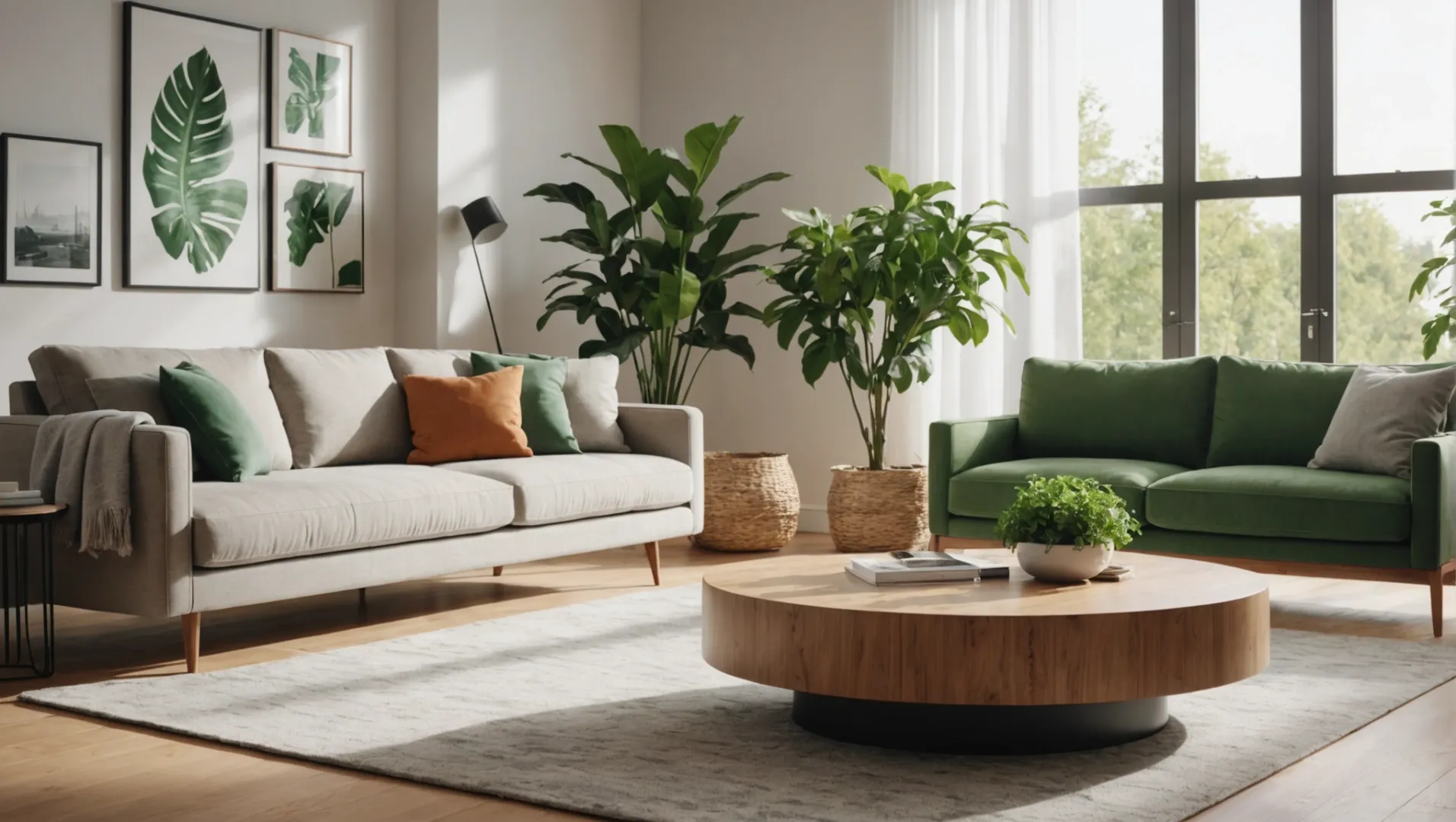
Understanding Pet Dander and Dust Mites
Pet dander consists of tiny, even microscopic, flecks of skin shed by cats, dogs, rodents, birds, and other animals with fur or feathers. Dust mites, on the other hand, are microscopic creatures that thrive in warm, humid environments and feed on human skin cells. Both are common allergens that can exacerbate asthma and allergy symptoms.
The Role of HEPA Filters
High-Efficiency Particulate Air (HEPA) filters are designed to trap 99.97% of particles that are 0.3 microns or larger. This includes pet dander and dust mite debris. By using air purifiers equipped with HEPA filters, you can significantly reduce the concentration of these allergens in your home.
Benefits:
- Allergy Relief: Regular use of a True HEPA air purifier6 can lessen allergy symptoms by capturing airborne pet hair and dust mite particles.
- Improved Sleep Quality: Reduced allergens lead to better breathing conditions at night, potentially improving sleep quality.
Additional Considerations
While HEPA filters effectively capture pet dander and dust mites, they cannot completely eliminate them from your environment. Regular cleaning routines, such as vacuuming with a HEPA-filtered vacuum cleaner and washing bedding frequently, complement the use of air purifiers.
Additionally, consider air purifiers with activated carbon filters to address odors associated with pets. This combination can enhance overall indoor air quality.
Choosing the Right Air Purifier
When selecting an air purifier to tackle pet dander and dust mites, look for the following features:
- True HEPA Certification: Ensures the filter meets stringent standards for particulate removal.
- Clean Air Delivery Rate (CADR): Indicates the volume of air purified per minute; higher numbers mean faster cleaning.
- Coverage Area: Match the purifier's capacity to the size of your room for optimal performance.
By understanding how different air purifiers7 operate and their effectiveness, you can make informed decisions to improve your indoor environment.
Conclusion
Investing in a quality HEPA air purifier can significantly improve indoor air quality by removing dust, mold, and allergens. Consider the technology and certification for the best results. Start breathing cleaner today!
-
Learn how True HEPA filters differ from lesser HEPA-like variants.: True HEPA stands out by consistently capturing 99.97% of particles down to 0.3 microns, making it the clear choice for critical applications like surgical ... ↩
-
Understand how HEPA filters effectively capture mold spores.: Studies have shown HEPA filters remove between 99.97% to 99.99% of mold spores from the air when used properly. Any mold spores that get trapped ... ↩
-
Learn key considerations for choosing an effective air purifier.: What is an air purifier? · Consider the size of your space · Consider the types of filter · Consider how much noise an air purifier makes · Consider its maintenance ... ↩
-
Understand variations in HEPA filter efficiencies and their impact on air quality.: They are tested and certified to capture at least 99.97% of particles as small as 0.3 microns. On the other hand, "HEPA-like" or "HEPA-type" ... ↩
-
Explore high-performing air purifiers with excellent CADR ratings for cleaner air.: Medify and Jaspr have some of the highest CADR. ↩
-
Learn about True HEPA filters' efficiency and benefits for allergen removal.: True HEPAs last longer and can operate 24 hours a day, 365 days a year. You can effectively eliminate dust, pet dander, pollen, mold, bacteria, ... ↩
-
Discover top air purifier models for tackling pet dander allergies.: The 8 best air purifiers for pet hair, odors, and dander, according to our tests. Our list includes top brands like Dyson, Bissell, and Levoit. ↩


